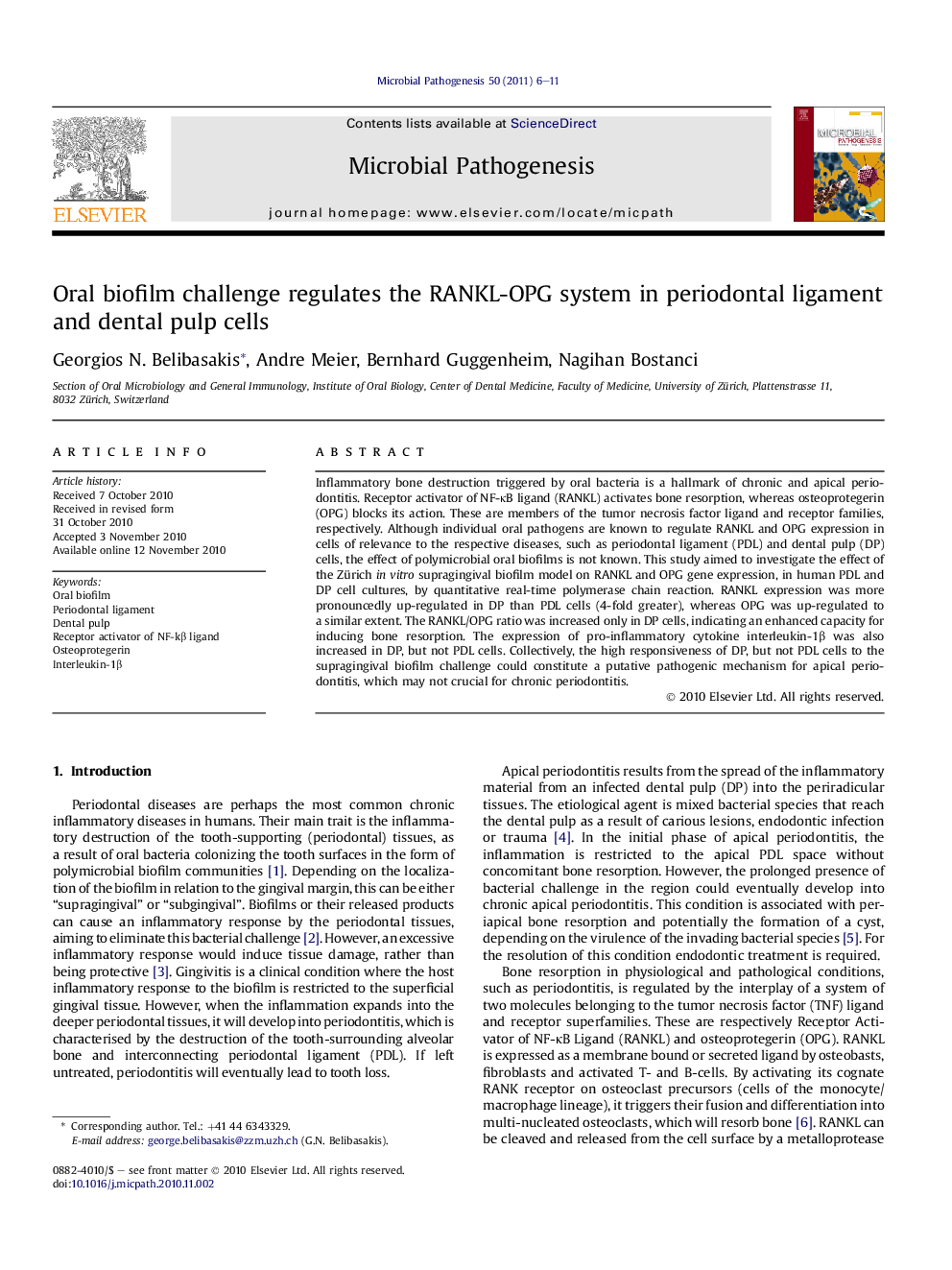| Article ID | Journal | Published Year | Pages | File Type |
|---|---|---|---|---|
| 3416852 | Microbial Pathogenesis | 2011 | 6 Pages |
Inflammatory bone destruction triggered by oral bacteria is a hallmark of chronic and apical periodontitis. Receptor activator of NF-κB ligand (RANKL) activates bone resorption, whereas osteoprotegerin (OPG) blocks its action. These are members of the tumor necrosis factor ligand and receptor families, respectively. Although individual oral pathogens are known to regulate RANKL and OPG expression in cells of relevance to the respective diseases, such as periodontal ligament (PDL) and dental pulp (DP) cells, the effect of polymicrobial oral biofilms is not known. This study aimed to investigate the effect of the Zürich in vitro supragingival biofilm model on RANKL and OPG gene expression, in human PDL and DP cell cultures, by quantitative real-time polymerase chain reaction. RANKL expression was more pronouncedly up-regulated in DP than PDL cells (4-fold greater), whereas OPG was up-regulated to a similar extent. The RANKL/OPG ratio was increased only in DP cells, indicating an enhanced capacity for inducing bone resorption. The expression of pro-inflammatory cytokine interleukin-1β was also increased in DP, but not PDL cells. Collectively, the high responsiveness of DP, but not PDL cells to the supragingival biofilm challenge could constitute a putative pathogenic mechanism for apical periodontitis, which may not crucial for chronic periodontitis.
